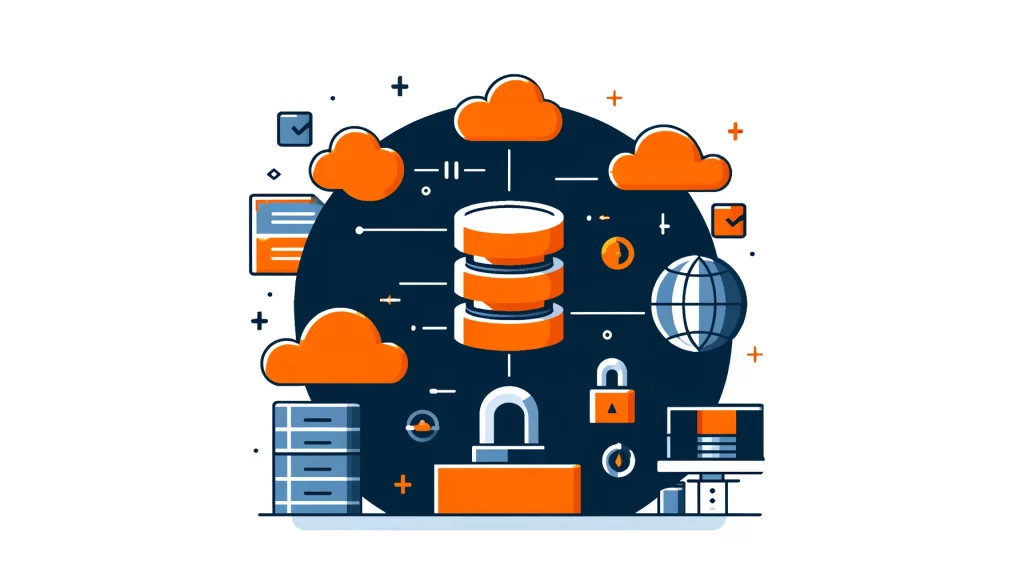
SQL Server Security: Best Practices

SQL Server is a popular database from Microsoft. It has many features to help secure your data effectively. In this article we will uncover the best practices of SQL Server security.
Understanding SQL Server Service Accounts
One of the key aspects of SQL Server security is properly configuring service accounts. SQL Server services use specific AD or Windows accounts. It’s important to give these accounts the right permissions.
Each service should ideally have its own dedicated account, which should be a member of a security group. This method prevents problems by ensuring that other services can still work well even if one account is hacked.
When setting up SQL Server service accounts, it’s important to follow the principle of least privilege. This means granting each account the minimum system rights and permissions necessary to perform its intended function.
Limiting service account permissions reduces security breach impact and minimizes unauthorized access to sensitive data, decreasing risk.
Choosing the Right Authentication Options
SQL Server offers several authentication options to control user access to your database. The most commonly used options are SQL Server Authentication mode, Windows Authentication mode, and mixed authentication mode.
SQL Server Authentication mode allows only AD or Windows users to connect to your SQL Server instance. In this mode, we recommend disabling the system administrator (sa) account to enhance security.
Windows Authentication mode, on the other hand, relies on AD or Windows users for authentication. SQL Server grants access to users based on the access token given to the logged-in user. This means that users are not authenticated directly.
This mode uses the security features of AD, like user accounts, groups, and password policies, which many organizations prefer.
Mixed authentication mode allows both SQL and Windows logins to access your SQL Server instance.
When using SQL logins, be cautious and ensure strong password policies are in place. This mode provides flexibility, but it is important to prioritize security. Make sure passwords are complex and regularly updated to protect sensitive data.
Implementing Strong Password Policies
Having a strong password policy is a critical aspect of SQL Server security best practices. Database administrator accounts should have complex passwords that can withstand brute-force attacks. When creating passwords, consider the following guidelines:
Use a minimum of ten characters, including a combination of uppercase and lowercase letters, numbers, and special characters. Passphrases consisting of at least fifteen characters, including both letters and numbers, can also generate strong passwords.
Avoid easily guessable passwords, such as birthdays, names, or common words and phrases. Attackers often employ dictionary-based brute-force attacks to crack weak passwords.
Enforce regular password changes to minimize the risk of unauthorized access. Periodically review admin passwords to ensure you rotate them according to your cyber security policy.
Utilize a password management tool with a strong master key to securely store and manage multiple passwords. This approach prevents password reuse and ensures no easy password compromisation.
Conducting Regular SQL Server Security Audits
Regular security audits are essential for maintaining the integrity and security of your SQL Server database. These audits not only help identify potential vulnerabilities and security weaknesses but also contribute to meeting regulatory compliance requirements such as GDPR and HIPAA.
When conducting SQL Server security audits, it’s important to keep track of relevant information for auditors. This may include monitoring common compliance criteria, user logins, login auditing, C2 auditing, server configuration, and schema changes.
By regularly auditing your SQL Server environment, you can proactively identify and address security issues before they escalate into major problems.
However, it’s important to note that auditing alone is not sufficient. The real value lies in dedicating resources to remediate the security weaknesses discovered during the audits.
Act quickly to fix any weaknesses in your SQL Server database to improve its security.
Implementing a Robust Backup Strategy
Having a good backup plan is crucial. It ensures that you can access and restore your SQL Server database in case of any issues.
This is important for maintaining the integrity and security of your data. You should regularly backup your database to prevent any potential data loss. SQL Server offers two primary backup approaches: full backup and differential backup.
A full backup is a complete copy of the entire database. It includes all data files, log files, and other related files. This approach provides a comprehensive snapshot of your database at a specific point in time.
Full backups are essential for disaster recovery scenarios and serve as the foundation for subsequent differential backups.
Differential backups, on the other hand, capture only the changes that have occurred since the last full backup. SQL Server keeps a map of extents (groups of eight pages in the database storage) that it has modified since the last full backup.
A differential backup only saves the parts that have changed. This makes the process faster and requires less storage space compared to full backups.
Experts recommend using a combination of full and differential backups for large databases.
Perform full backups and supplement them with more frequent differential backups. This approach strikes a balance between backup speed, storage efficiency, and recovery time objectives. For smaller databases, periodic full backups may suffice.
Leveraging SQL Monitoring Tools
SQL monitoring tools play a vital role in ensuring the security and performance of your SQL Server database. These tools provide valuable insights into database processes, server settings changes, and potential security anomalies.
By leveraging SQL monitoring tools, you can proactively detect and respond to security threats and performance issues.
When choosing a SQL monitoring tool, make sure it can scan database processes and monitor changes to server settings. The tool should be capable of identifying session anomalies, errors, and SQL statements that grant access to sensitive data.
By steadily monitoring your SQL Server environment, you can quickly detect and investigate suspicious activities, such as unauthorized access attempts or abnormal database behavior.
However, it’s important to be mindful that monitoring tools themselves can introduce security risks. Since your database ecosystem integrates these tools, they may have access to sensitive information.
Therefore, it’s crucial to ensure that the monitoring tools you choose comply with your organization’s security and compliance requirements. Regularly review and update the configuration of your monitoring tools to maintain a secure monitoring environment.
Conclusion
Following SQL Server security best practices is crucial for safeguarding your data and ensuring your database remains secure. By following the tips in this article, you can improve the security of your SQL Server.
Start by properly configuring SQL Server service accounts, adhering to the principle of least privilege. Choose the appropriate authentication options based on your security requirements and enforce strong password policies to prevent unauthorized access. Conduct regular security audits to identify and remediate vulnerabilities promptly.
Establish a robust backup strategy that combines full and differential backups to ensure data availability and .
Leverage SQL monitoring tools to gain visibility into database processes and detect potential security threats. Be careful of the security risks of the monitoring tools and make sure they meet your compliance needs.
Remember, SQL Server security is an ongoing process that requires continuous effort and vigilance.
Stay informed about the latest security best practices, regularly update your SQL Server environment, and foster a culture of security awareness within your organization.
By prioritizing SQL Server security, you can safeguard your valuable data assets and maintain the trust of your stakeholders.
